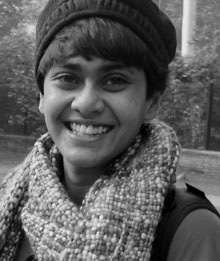

Re-imagining Access to Justice
- /
- Articles and Blogposts /
- Re-imagining Access to Justice
A Recap of the DAKSH – NLU (D) Conference on Access to Justice
The Access to Justice Survey Conference took place in India International Centre, New Delhi, on 23 April 2016. The conference was organised by DAKSH in collaboration with Centre for Constitutional Law, Policy and Governance at National Law University, Delhi. At the conference, the results of the Access to Justice Survey, conducted by DAKSH earlier this year, were released.
The Access to Justice Survey was designed by DAKSH to understand the profile of litigants and their relationship to the judiciary. The survey, conducted across 305 locations in 24 states and interviewing 9329 litigants, gathered data on socio-demographic indicators, cost structures and case-related information. The litigants interviewed were involved in both civil and criminal cases in the subordinate judiciary.
The survey is interested in the voice of the litigants before the courts today, since the conversation around the legal system is mostly restricted to the limitations of the institution rather than the expectations of the litigants and their travails.
The agenda of the conference was to reflect upon structural and systemic barriers in access to justice and to think together about reform measures to address these barriers, in light of the data of the survey results. The conference (whose schedule can be found here) was attended by lawyers, academics, activists, policy think tanks, and a sitting judge of the Supreme Court. All the participants spoke of how to enrich the discourse and reform measures around access to justice, to facilitate greater access not just to courts, but justice itself.
The speakers in the conference addressed a range of issues. In the first session on Social, Economic and Institutional Barriers to Access to Justice, Professor Mohan Gopal spoke of the need to think of the economic and social gains of dispute resolution in the courts, rather than costs of litigation as just a burden on the institution and litigant. He said that courts now do not protect the poor and enable the powerful, and emphasized the need to create research on access to justice needs of the powerless and poor. Professor G.S. Bajpai discussed the importance of data-driven analysis of the judiciary. He addressed the fact that ‘access’ is not a favour that the state grants its citizens, but something intrinsic to the rights of citizens. Dr. Vipul Mudgal discussed the need to think of unfreedom and injustice that creates a dysfunctional relationship between democracy and the rule of law. Further, he noted that access to justice as a concept should not be reduced to just access to courts. Based on her experiences in South Bastar, Chattisgarh, Isha Khandelwal from Jagdalpur Legal Aid Group spoke of the situation of adivasis and their relationship with the subordinate courts, where they saw the courts as a mechanism used to oppress them. She also spoke of the bleak condition of undertrials in South Bastar.
The second session, Way Forward – Reform Measures to facilitate Access to Justice, was opened by Hon’ble Justice Madan B. Lokur. The session took a close look at legal aid and its operation in India. In view of the DAKSH data on legal aid which reveals that only 2.36 per cent of litigants were using court-appointed lawyers, Justice Lokur said that the utilisation of NALSA needs to be addressed urgently as it was falling short of its original intentions. Vrinda Grover spoke of how legal aid lawyers need to be far more accountable to their clients than they currently are. Prashant Bhushan added that 80 per cent of our country is shut out of judicial system because they cannot access lawyers and that legal aid quality is poor. He also emphasised the importance of ‘people’s courts’ that could address the everyday legal needs of individuals. Dr. Aparna Chandra added that it is not only the quality of legal aid, but that lack of trust and alienation that drives people away from legal services.
Justice Lokur spoke of the tremendous infrastructural problems faced by the judiciary. A discussion followed on how the judiciary can take the lead in seeking budgets to address the needs of physical infrastructure needs for both litigants and the court premises. He also spoke of how technology could add greatly to the rights of litigants, and cited examples from different pilot experiments across the criminal justice machinery in India.
Vrinda Grover addressed the importance of the legal system, which does not always guarantee ‘justice’, but is a significant recourse for the marginalised. As the security of country depends largely on judicial system and not merely on troops on the border, budgets to the judiciary need to be increased. Dr. Renuka Sane addressed the question of reform measures by stating that judicial reforms should focus on those places where there are resources, and then move to areas with greater challenges. She also said that the separation of judicial function and administrative function is key for smoother functioning of judiciary.
The session ended with the question of how to enrich the conversation around the concept of ‘Access to Justice’ that needs to be given more content and shape through judicial reform.
A web data interactive of the survey results has been published by DAKSH and designed by How India Lives. It can be found here. The conference and the survey results have been covered by The Times of India, The Hindu and Live Mint and many other media houses. Please find more links @daksh_india. On Twitter.
Photo Credit: Centre for Constituional Law, Policy and Governance
The views expressed in this article are solely those of the author’s and they do not represent the views of DAKSH.

Kavya Murthy
RECENT ARTICLES


Civil Disputes, Criminal Justice Resolutions

Set the guardrails for AI use in courtrooms

Why ICAI’s audit limit is misguided and outdated

-
Rule of Law ProjectRule of Law Project
-
Access to Justice SurveyAccess to Justice Survey
-
BlogBlog
-
Contact UsContact Us
-
Statistics and ReportsStatistics and Reports
© 2021 DAKSH India. All rights reserved
Powered by Oy Media Solutions
Designed by GGWP Design